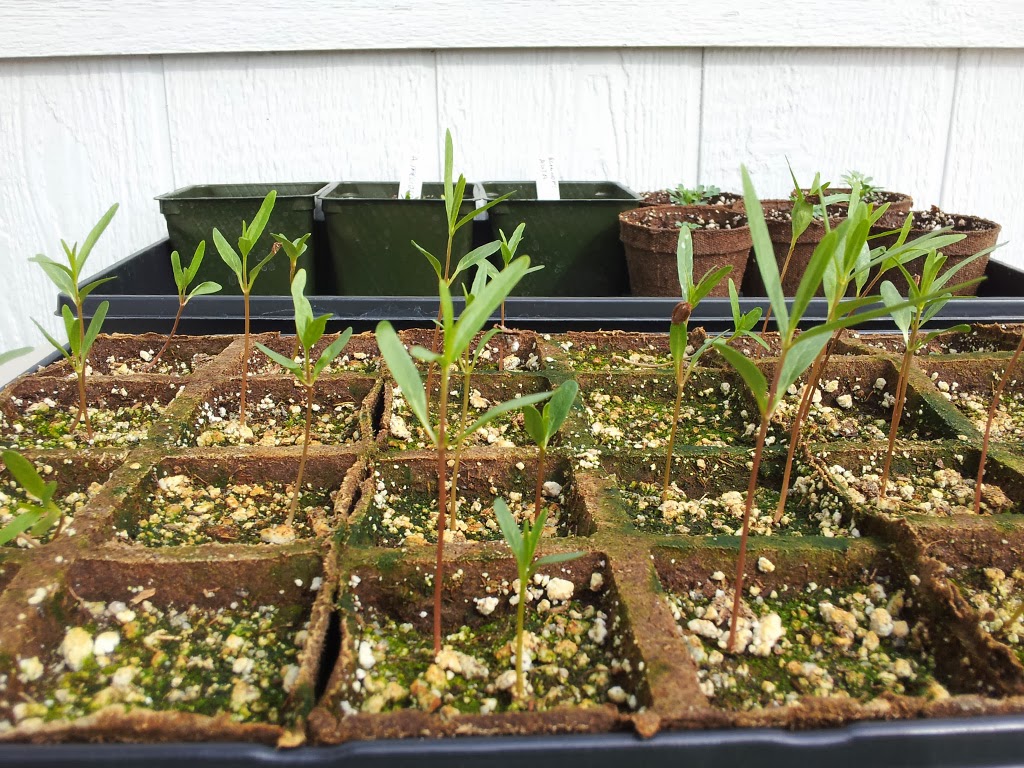"Gardening is a matter of your enthusiasm holding up until your back gets used to it."
-Author Unknown
The Missing Monarchs article exposes the threat certain aspects of modern farming practices has on the steep decline of Monarch butterfly populations in the U.S. Scary stuff, but there are things we can do to help stem the tide. Mitigation versus procrastination?
Hopefully, Mexico and the U.S. can work together to protect Monarch butterflies. An L.A. Times article by Tracy Wilkinson. Thanks to Margot Norris who subscribes to this blog for bringing this article to my attention.
The Missing Monarchs article exposes the threat certain aspects of modern farming practices has on the steep decline of Monarch butterfly populations in the U.S. Scary stuff, but there are things we can do to help stem the tide. Mitigation versus procrastination?
Hopefully, Mexico and the U.S. can work together to protect Monarch butterflies. An L.A. Times article by Tracy Wilkinson. Thanks to Margot Norris who subscribes to this blog for bringing this article to my attention.
CONTAINER TIP:
When using large containers, especially tall varieties, one can save on potting soil (and weight!) by filling the bottom of the the pot with with light materials such as bits of Styrofoam or similar substances. The thought of using packing peanuts crossed my mind, but they may not work very well due to their meringue-like sponginess that would most likely compress with the soil and water weight put on them.
Using empty plastic drink bottles, I line the bottom of the pot, cover the bottles with a piece of landscape fabric or other suitable material to separate the filler from the soil, and then add soil. If there are large empty spaces between the bottles and the sides of the pot, I fill these up with 3/4" gravel. This serves a twofold purpose:
Using empty plastic drink bottles, I line the bottom of the pot, cover the bottles with a piece of landscape fabric or other suitable material to separate the filler from the soil, and then add soil. If there are large empty spaces between the bottles and the sides of the pot, I fill these up with 3/4" gravel. This serves a twofold purpose:
- It reduces the weight of the pot.
- It aids in maintaining a healthy root system.
A healthy root system you ask? Yes! replied Le Raconteur des Papillions. Adding a bit of open space at the bottom of the pot allows excess water to freely percolate through the soil medium and out the drain hole(s), thereby eliminating the common effect of waterlogged soil at the container's bottom that happens often with taller vessels, especially for those employing heavy-handed watering regimens. This technique helps to maintain a good soil to water ratio towards the bottom, and air down there allows the roots to breathe much better, in the same manner a Scotsman derives benefits from wearing a kilt. (shudder)
This pot is taller than it is wide. Soil at the bottom of it tends to stay wet and turn sour, and they can get heavy!
Adding some gravel around the bottles to eliminate any empty pockets that would cause the landscape fabric to fold in under weight.
Laying of fabric over bottles and gravel.
Roughly the airspace created by placing the filler at the bottom of the container. One can go as high as one wishes.
...and here it is planted with a passion vine trained on a trellis to attract Gulf Fritillaries, with some Scabiosas towards the front as general nectar plants.
Broken up chunks of Styrofoam would be a better choice than the gravel, but storage constraints in a mobile home are at a premium. I already use gravel in other ways, so it is already here.
In all of my larger pots I at least add an inch or two of gravel topped off with a bit of landscape fabric in order to keep the soil sweet. One can buy small rolls of this fabric at home improvement stores for a pittance. I don't advise using landscape fabric, also known as geotextile, in the garden, except under gravel areas. Here's why:







